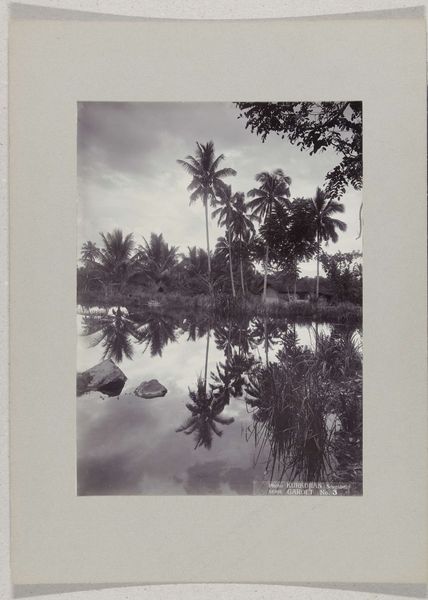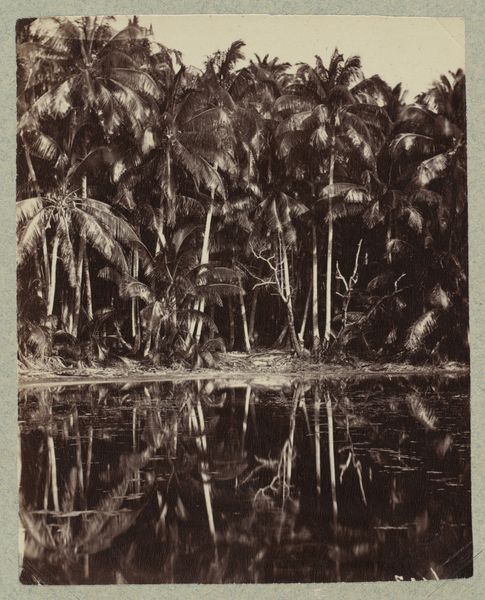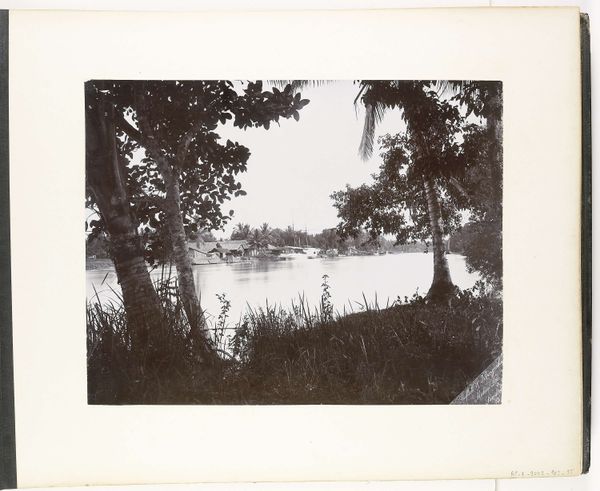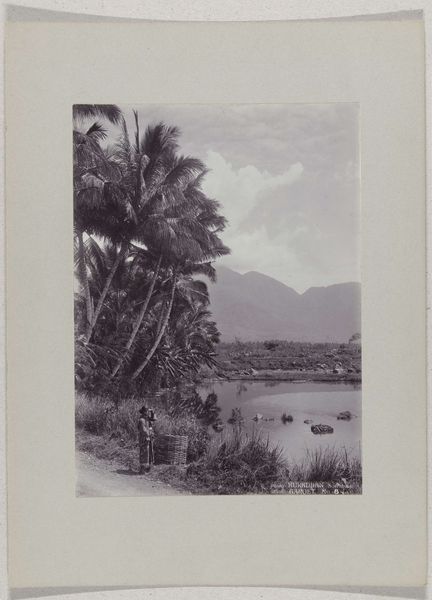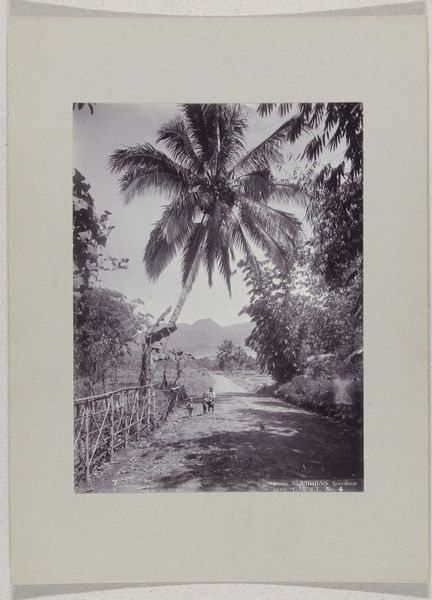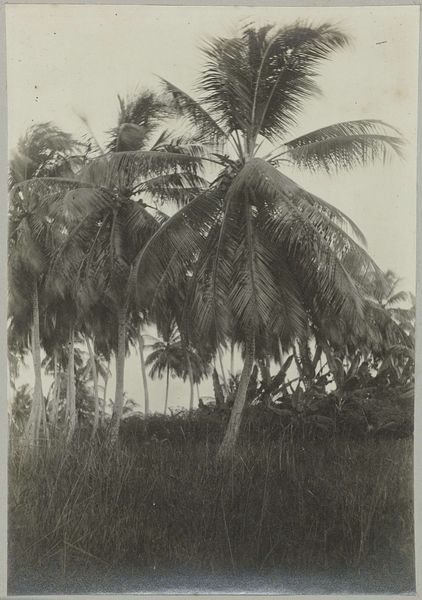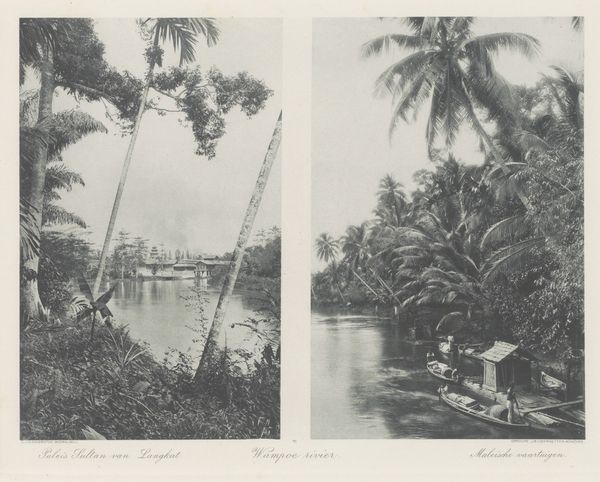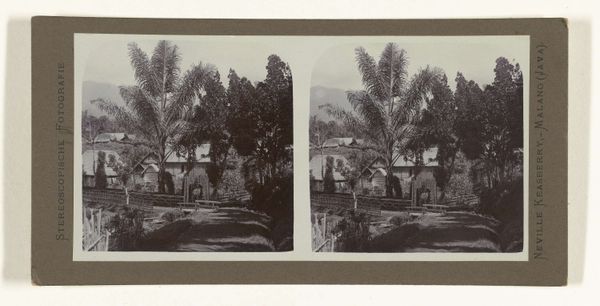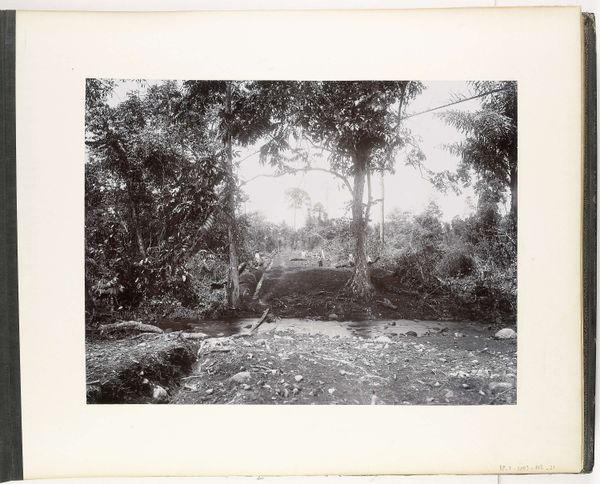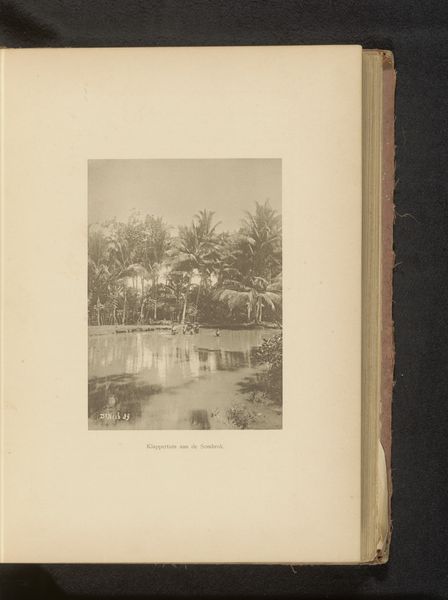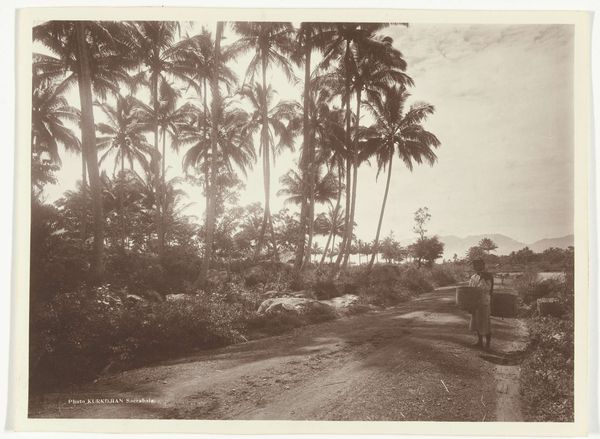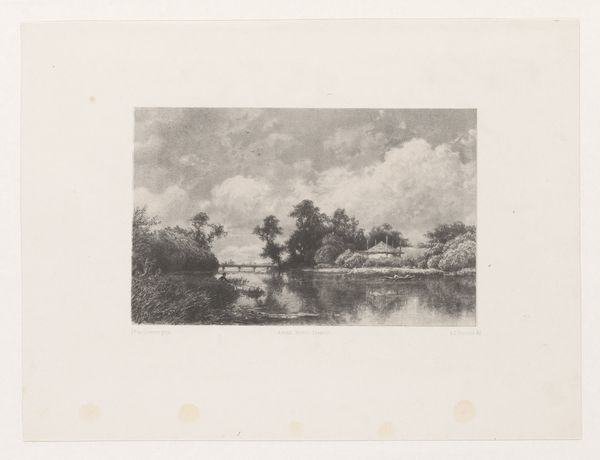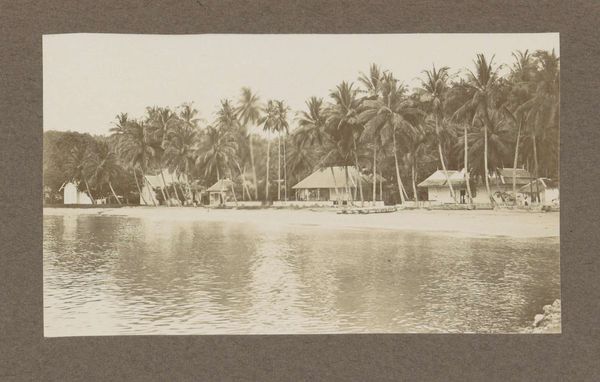
photography, albumen-print
#
landscape
#
photography
#
orientalism
#
albumen-print
#
realism
Dimensions: height 169 mm, width 229 mm, height 243 mm, width 329 mm
Copyright: Rijks Museum: Open Domain
Editor: Here we have "Visvijvers te Tjipanas bij Garoet, Nederlands-Indië", a photograph dating from around 1895 to 1915, attributed to Onnes Kurkdjian. The use of albumen print gives it a soft, almost dreamy quality. I’m struck by the symmetry created by the reflection of the palm trees in the water. What do you make of its formal qualities? Curator: The composition adheres to a carefully constructed structure. The horizontal plane of the water acts as a fulcrum, grounding the vertical aspirations of the trees. Semiotically, the reflection suggests a doubling, a mirroring of reality that destabilizes any fixed perspective. Notice how the tonal gradations within the photograph, particularly in the interplay of light and shadow, delineate depth and form. Editor: So you are saying the reflection adds complexity to the work? Curator: Precisely. It invites contemplation on the nature of representation itself. Consider the materiality of the albumen print – the very texture contributes to the photograph's meaning, evoking a specific historical moment and aesthetic sensibility. The surface is not neutral; it’s active. Editor: That makes sense. The texture definitely contributes to the ethereal quality. Curator: Ask yourself what effect is achieved by the photographer positioning the viewer at a medium distance from this placid scenery, separated and observing. Are there suggestions of an asymmetrical nature in the arrangement of palms to the right versus the more dramatic forms to the left? Editor: I see the contrast now. The dark and light palms create tension. It really makes the photograph more visually engaging. I never thought about it so analytically before. Curator: Formalism invites us to see beyond the immediate representation. What does focusing our critical engagement through this lens open for us here? Editor: Now, I'm noticing aspects such as the tonal arrangement, the contrasting forms and even the surface texture of the print itself adding new perspectives into what appears to be a simple landscape. Curator: Exactly. We might now acknowledge and reconsider that the apparent simplicity veils the artful construction of the entire piece.
Comments
No comments
Be the first to comment and join the conversation on the ultimate creative platform.
